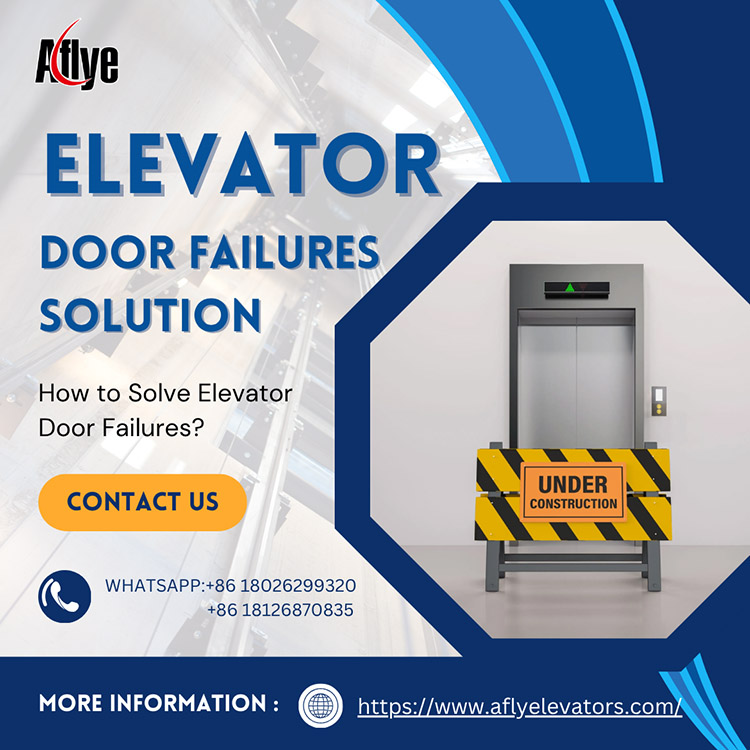How to Solve Elevator Door Failures?
In an elevator system, the elevator door is one of the most frequently used and heavily worn components. Door failures not only affect operational efficiency but may also pose potential safety hazards.
To ensure smooth and safe elevator operation, it’s essential to diagnose and fix common elevator door issues in time.
As a professional elevator and escalator parts supplier, A-FLY shares the most common causes of elevator door malfunctions and effective solutions.

1. Elevator Door Cannot Open or Close Properly
One of the most common problems with elevator doors is that they fail to open or close smoothly.
Possible causes:
Malfunction in the door operator control board
Worn or jammed door rollers
Foreign objects blocking the door tracks
Solutions:
Start by cleaning the door tracks and checking whether the door rollers rotate smoothly.
If the rollers are worn or loose, replace them with high-quality A-FLY elevator hanger rollers.
If the problem lies in the control section, inspect the elevator door operator board or signal cables for aging, and replace them with A-FLY-compatible parts if necessary.
2. Unusual Noise or Vibration When Opening and Closing
Common causes:
Aged door guide shoes
Misaligned door hanger rollers
Deformed door tracks
Solutions:
Check if the door is properly aligned with the tracks; recalibrate if needed.
If the noise is caused by friction, apply lubricant to the guide shoes or replace them with A-FLY door guide shoes.
A-FLY’s guide shoe products are made of wear-resistant polyurethane, effectively reducing friction noise and extending service life.
3. Elevator Door Fails to Close or Keeps Reopening
This issue is often related to the door light curtain sensor or door lock contact system.
Solutions:
Check whether the light curtain is blocked or the sensor is damaged.
If the door lock contact is unstable, replace it with an A-FLY elevator door lock to ensure the safety circuit closes properly.
A-FLY’s light curtain and door lock series feature high sensitivity and strong stability, allowing for quick obstacle detection and enhanced passenger safety.
4. Door Closing or Opening Too Fast or Too Slow
Possible causes:
Abnormal voltage in the door motor
Incorrect control board parameters
Faulty door operator drive module
Solutions:
Adjust the elevator door operator controller parameters to achieve smoother door movement.
If the motor or drive module has deteriorated, replace them with A-FLY door operator parts to maintain optimal speed response and safety performance.
5. Preventive Maintenance Is Key
Most elevator door failures are the result of long-term wear and insufficient maintenance.
Regular cleaning of door tracks, replacement of worn parts, and inspection of electrical connections are essential for maintaining system stability.
A-FLY recommends performing a full door system inspection every six months to prevent minor issues from becoming safety risks.
All A-FLY elevator door rollers, door operators, and door locks undergo rigorous testing to ensure superior reliability and service life.
Conclusion: Solve the Problem from the Source with A-FLY
Every detail of the elevator door system affects both safety and user experience.
By choosing high-quality components, you can significantly reduce failure rates and extend maintenance intervals.
As a professional elevator and escalator parts supplier, A-FLY provides complete elevator door part solutions — from operators and rollers to locks — meeting all your maintenance and replacement needs in one place.
Every opening and closing should be safe, smooth, and silent — that’s A-FLY’s promise.

